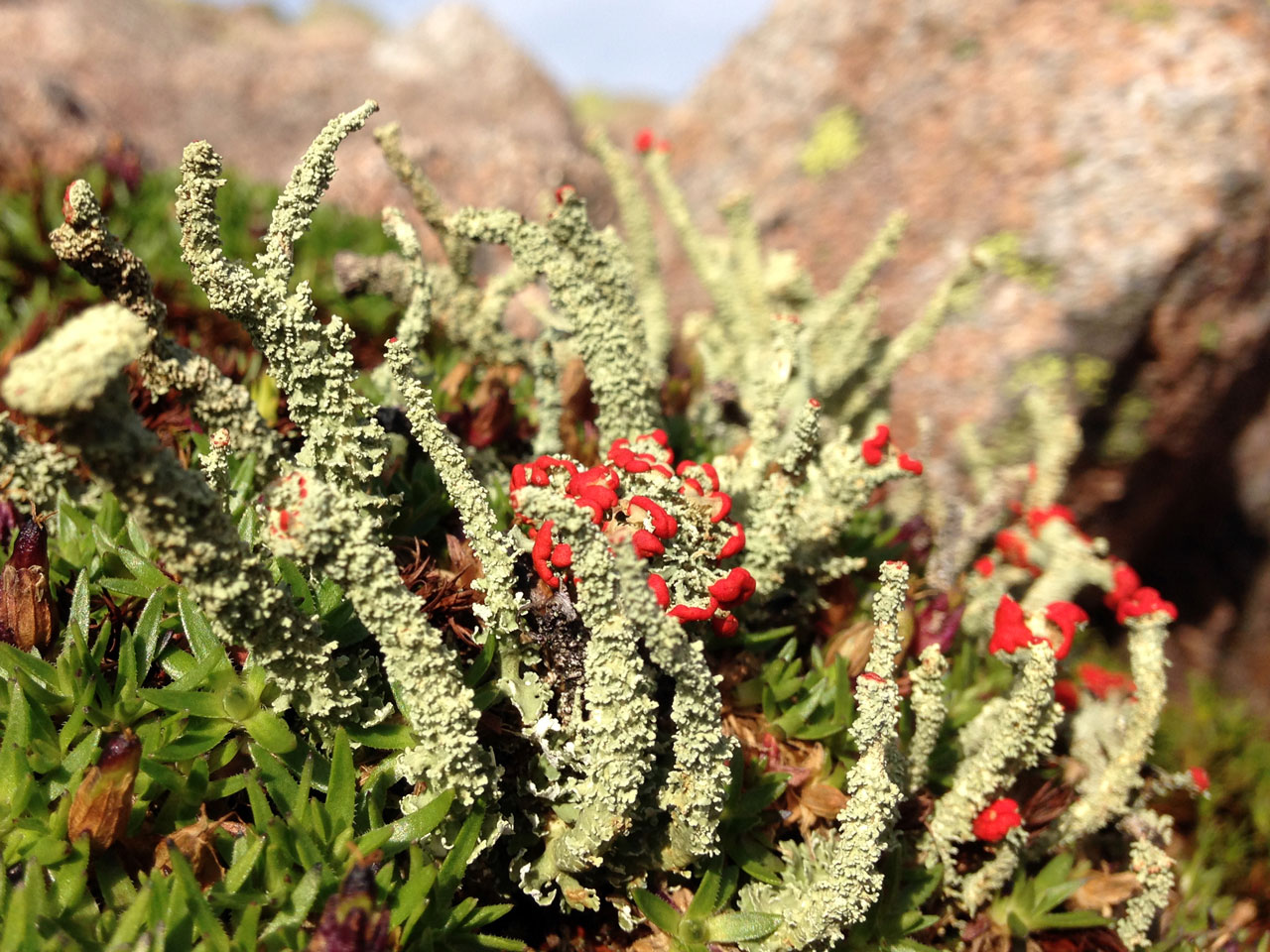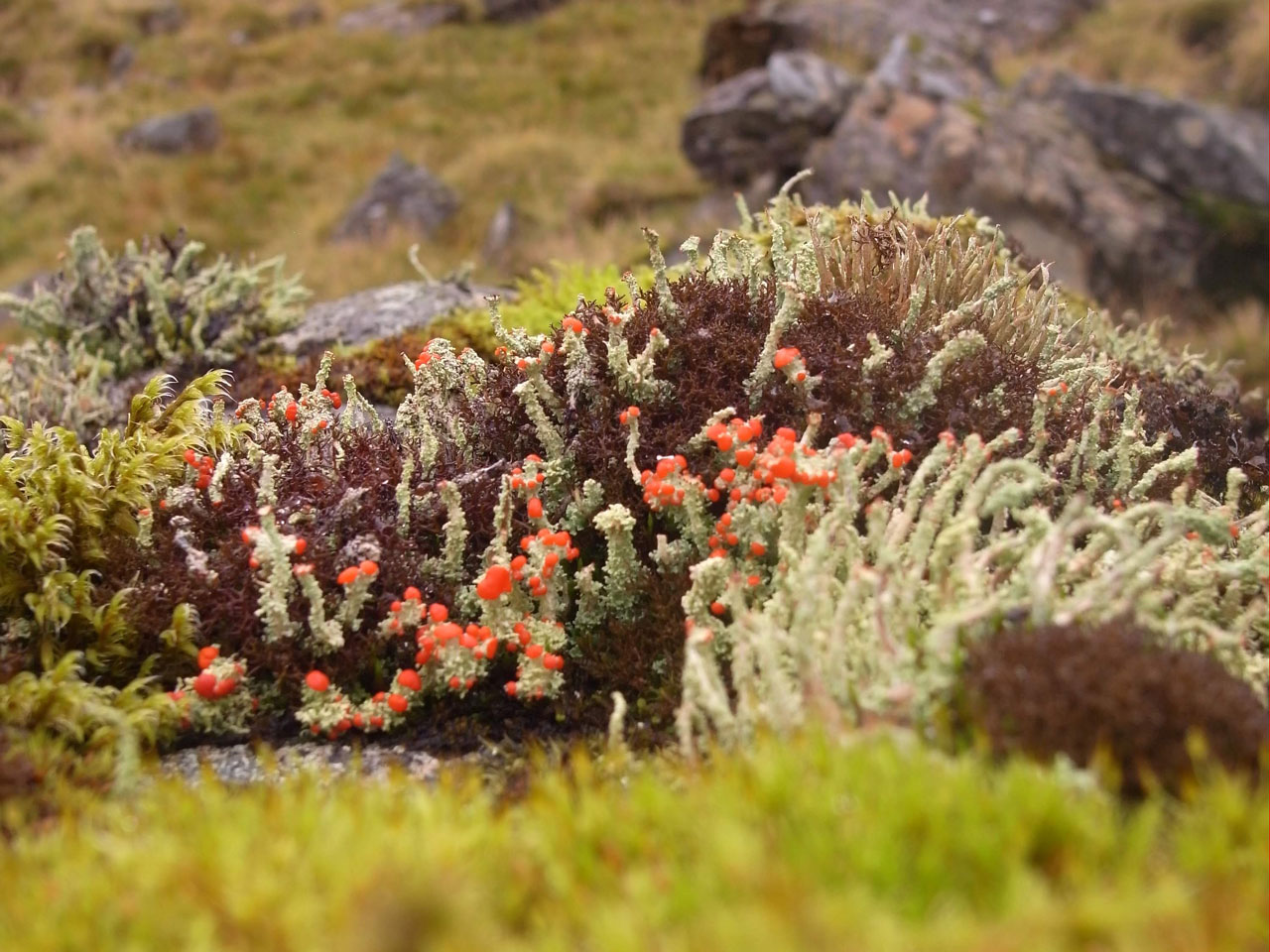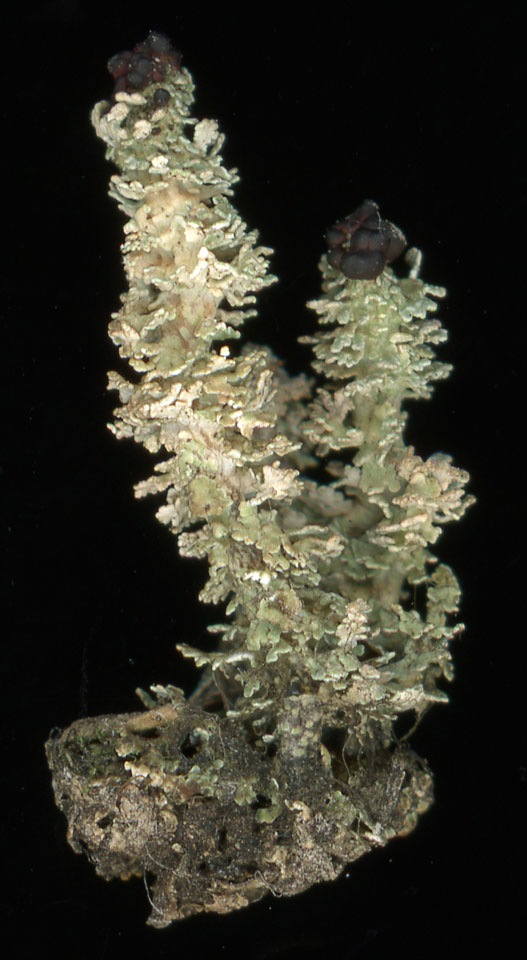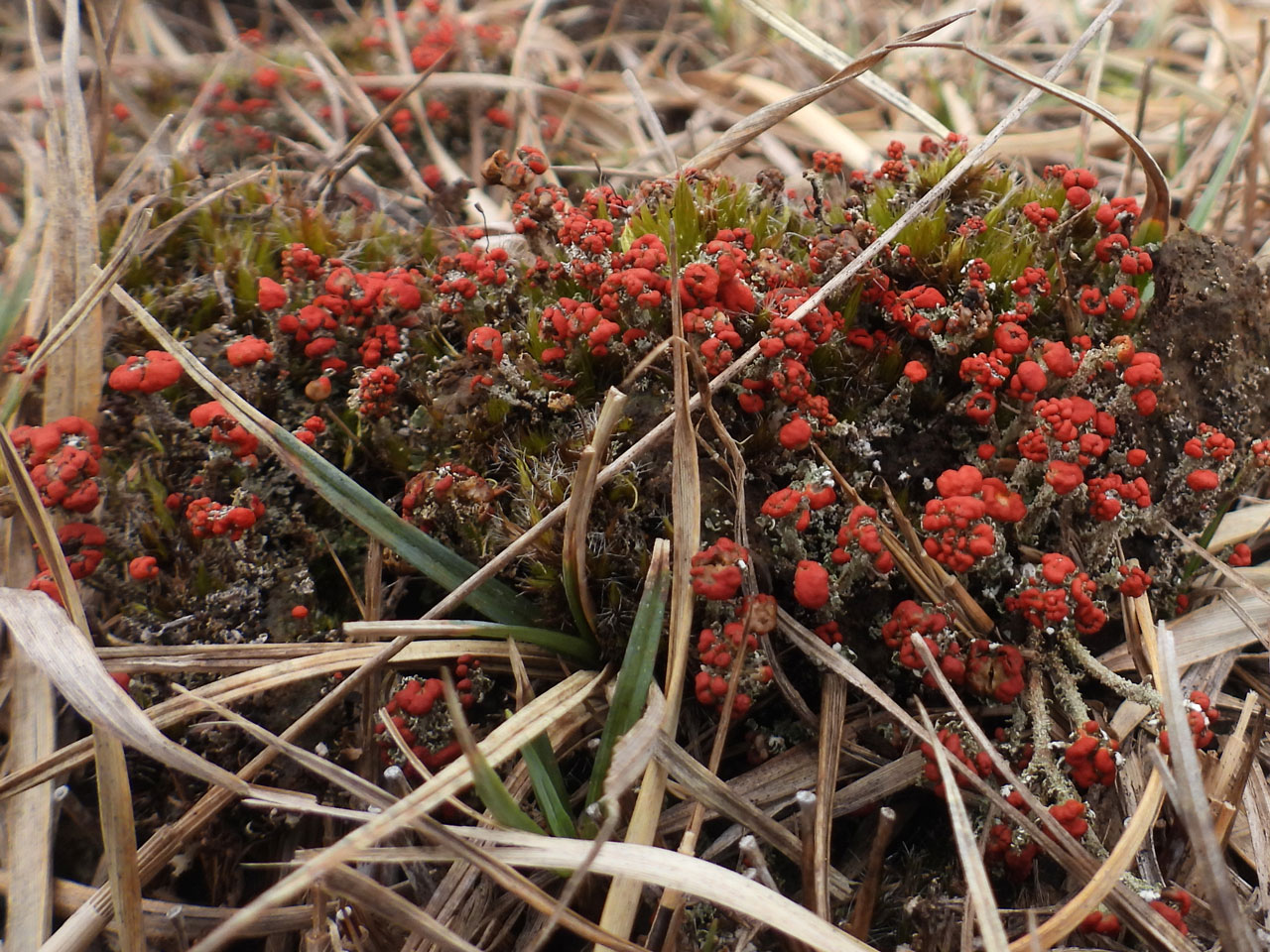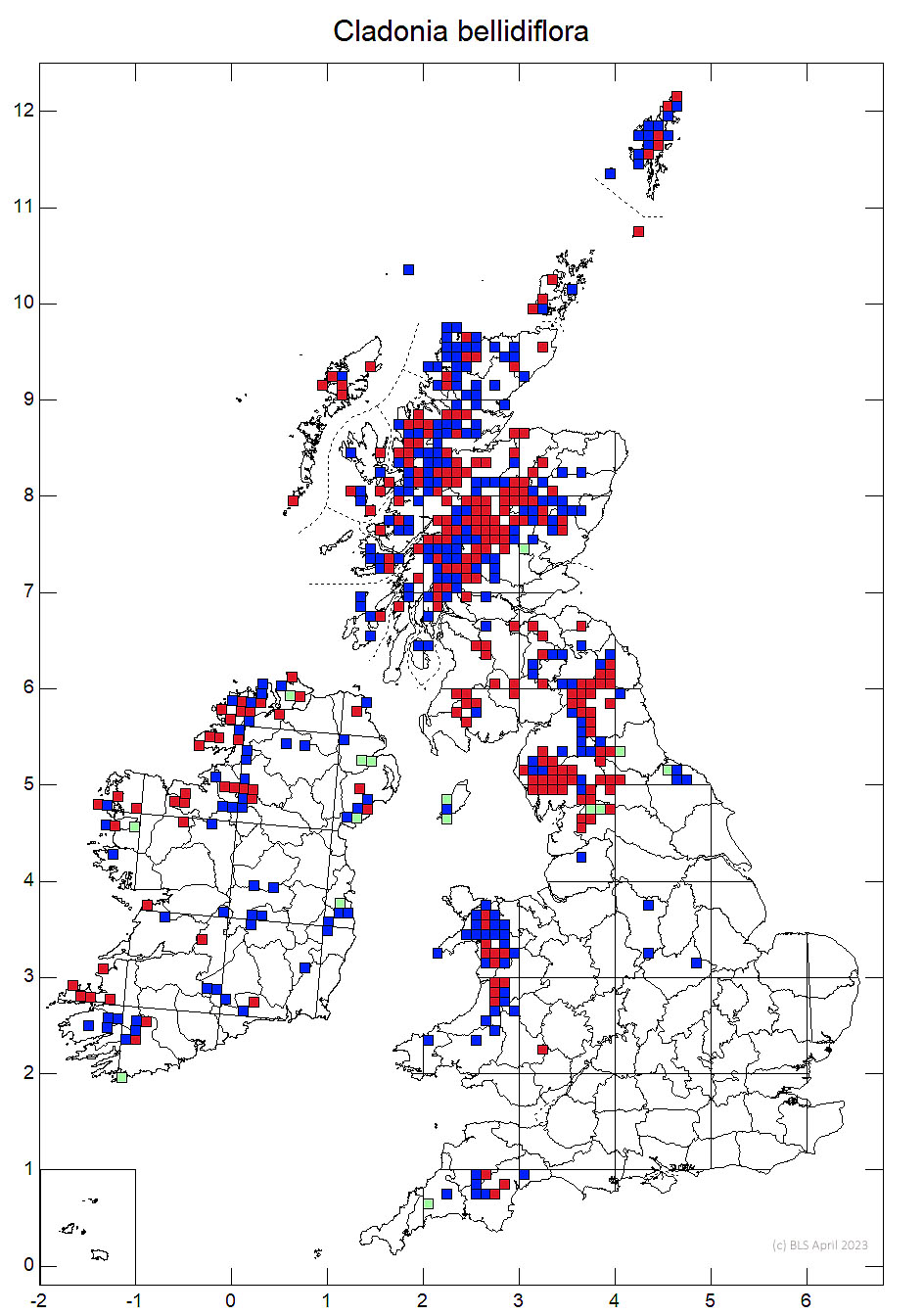Cladonia bellidiflora
A distinctive Cladonia with red apothecia, held at the ends of grey-green to yellow-green unbranched podetia, which are densely covered in peeling squamules. The bright UV+ white reaction helps with the identification of even stunted material. An upland and northern species, common in upland Scotland in acidic habitats and extending south on higher ground.
Podetia 3–4 (–5) cm tall, grey-green to yellow-green, straight or somewhat curved or twisted, pointed at the apices, unbranched, the surface often entirely densely peeling-squamulose, especially towards the base, often becoming corticate-granular or ± decorticate and paler towards the apices, never sorediate. Basal squamules small, often inconspicuous, 1–3 mm long, upper surface dull grey-green ± tinged yellow, deeply indented, yellowish brown towards the base on the lower surface. Apothecia occasional, red, sessile or on short projections at the apex of podetia, often becoming clustered. Thallus C–, K–, KC+ yellow, Pd–, UV+ white (± usnic and squamatic acids, ± yellow pigment). Populations elsewhere contain other substances.
A distinctive species which, though often stunted in southern localities, is characterised by the unbranched, pointed podetia, the yellow-green colour, the often dense, peeling squamules, absence of soredia or granules and the red apothecia and pycnidial jelly. When sterile it is distinguished from Cladonia squamosa by the yellow colour (usnic acid), ± presence of orange pigmentation (K+ purple) at the base of the undersides of the basal squamules and absence of perforations in the podetia; entirely grey specimens, lacking usnic acid, are rarely encountered.
Amongst Calluna and mosses between rocks, blanket bog and particularly on stabilised scree on moorland and montane areas.

Chiefly Scotland, also extending locally to N. England, Wales and S.W. England (Devon, Dartmoor). Widely distributed but scarce in Ireland.
Pino-Bodas, R., Sanderson, N., Cannon, P., Aptroot, A., Coppins, B., Orange, A. & Simkin, J. (2021). Lecanorales: Cladoniaceae, including the genera Cladonia, Pilophorus and Pycnothelia. Revisions of British and Irish Lichens19: 1-45. Link
Text by Neil A Sanderson, based Pino-Bodas et al (2021)
